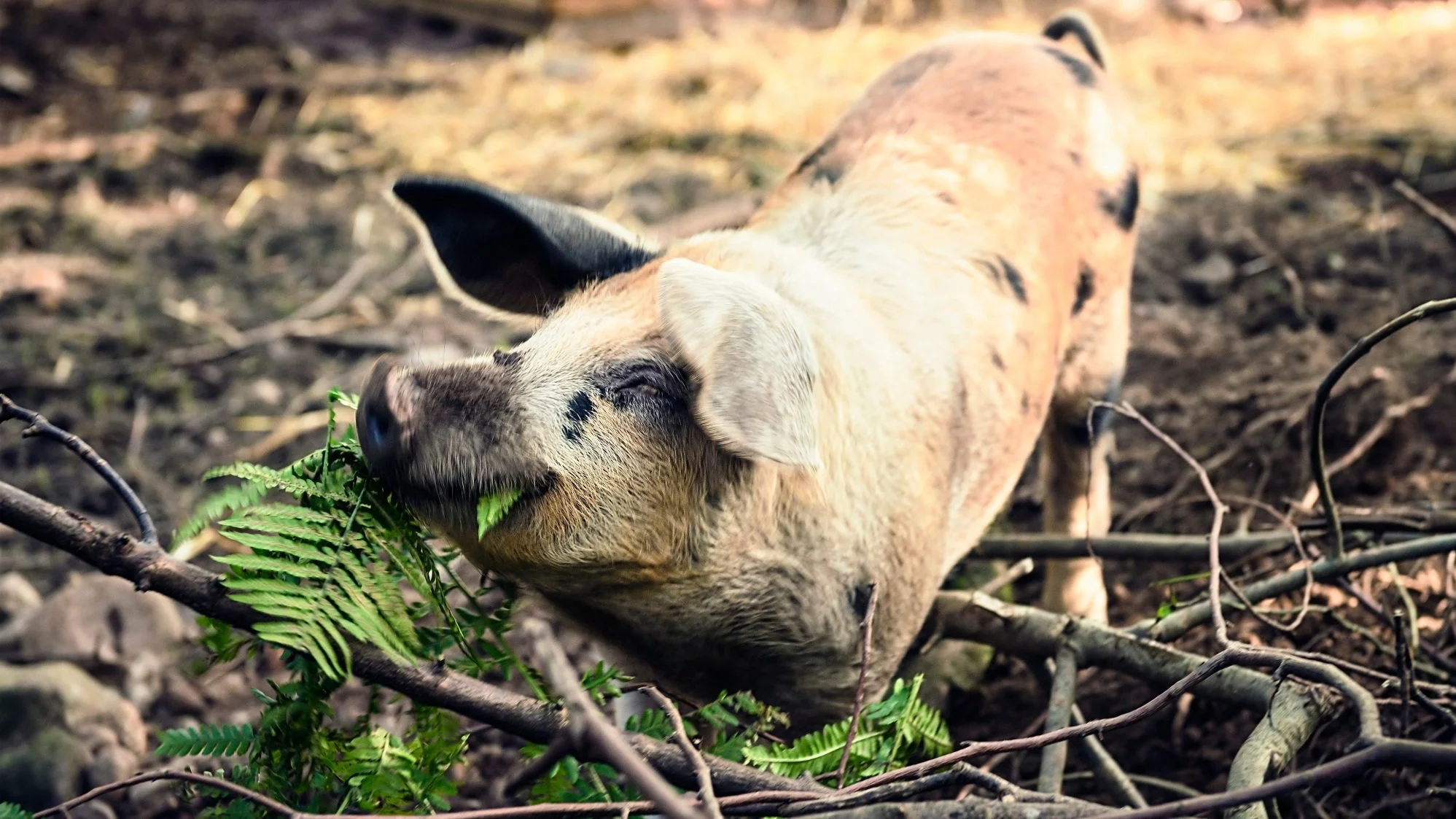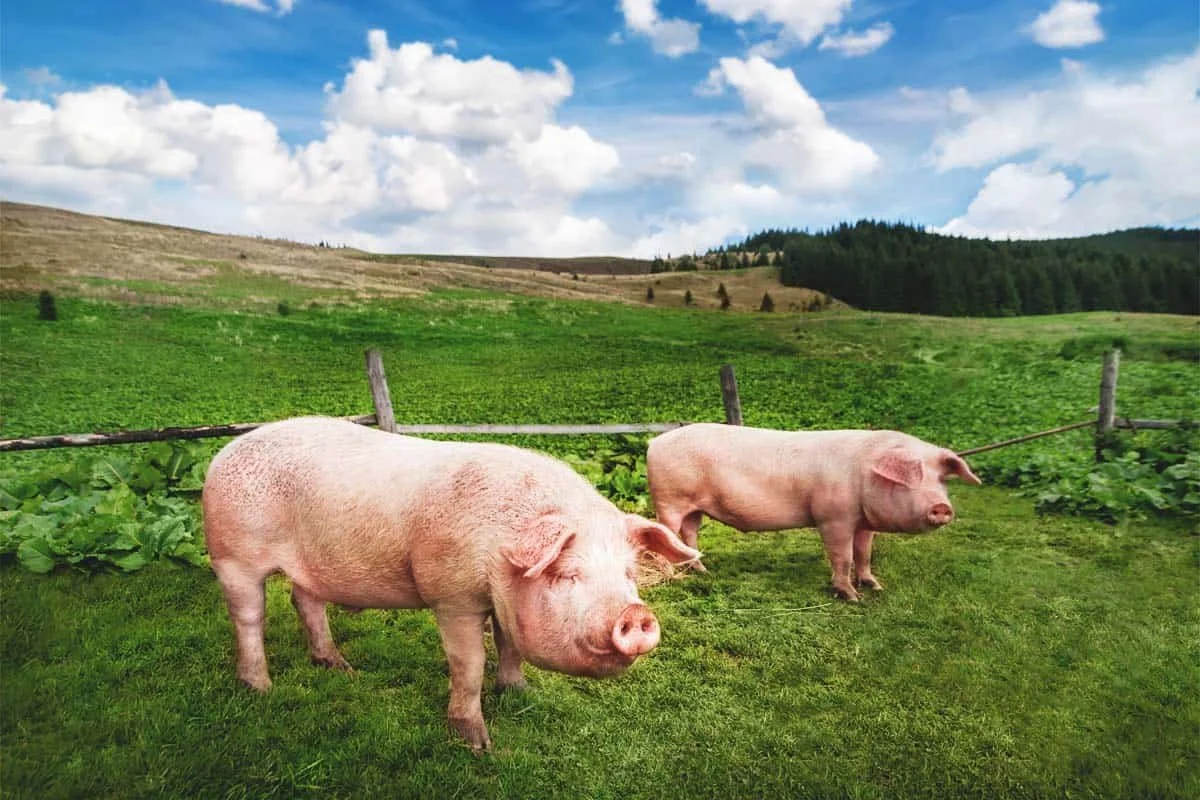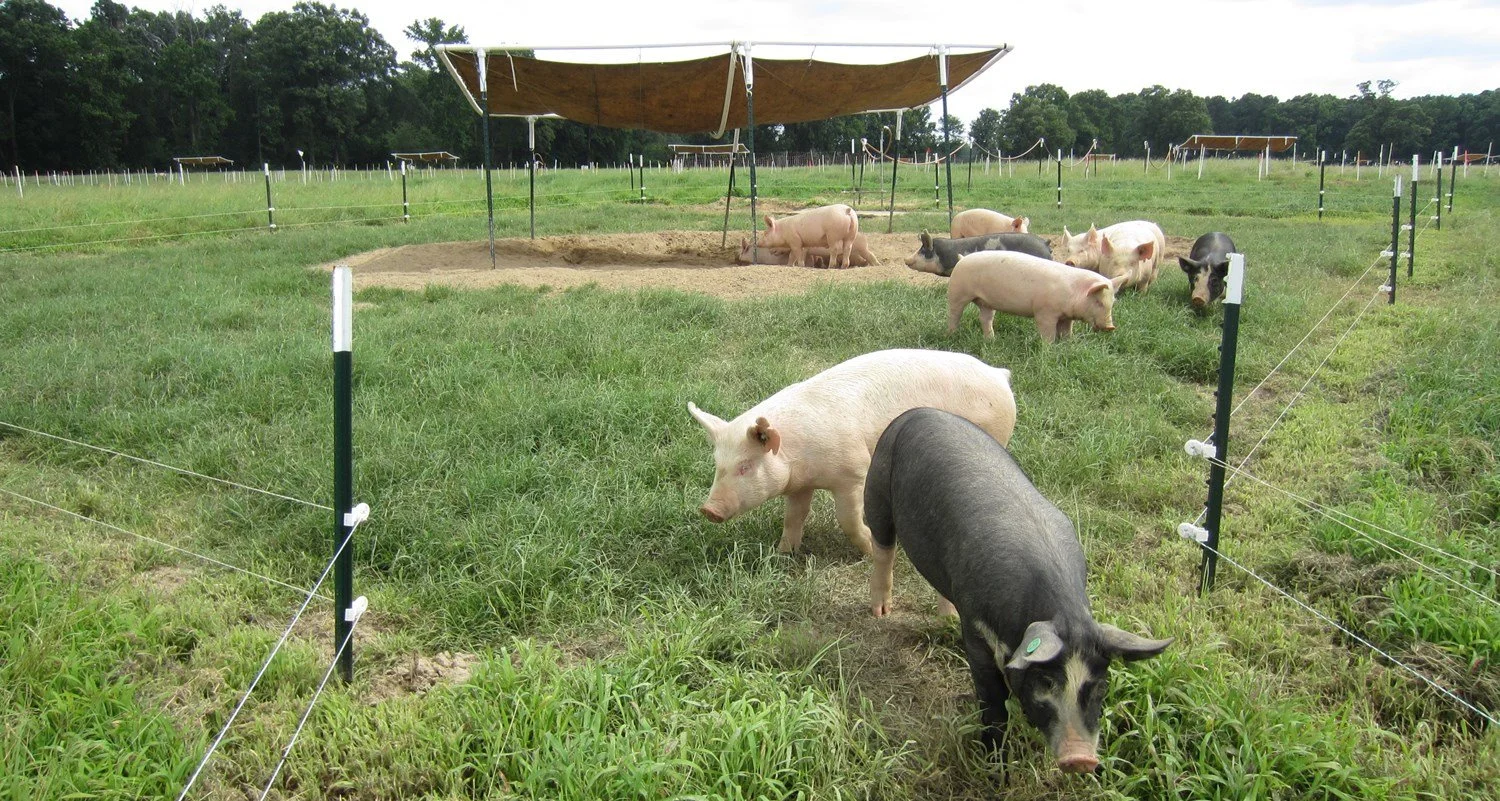Forage Options for Pastured Pigs
Discover > Raising Pigs > Forage Options for Pastured Pigs
Pasture-raised pigs have revolutionized the way we think about swine farming, offering a myriad of advantages over conventional confinement operations. Although raising pigs on pasture demands more time and effort, the benefits far surpass the challenges. Pastured pigs relish a diet rich in natural forages, breathe cleaner air, enjoy exercise opportunities, and benefit from natural parasite control. Furthermore, their presence in the pastures enriches soil fertility. In this comprehensive article, we'll delve into forage options for pastured pigs, exploring how these options contribute to optimal growth, enhanced health, and sustainable agriculture. We'll also examine the role of supplementary feeding programs in achieving these goals.
Texas & Beyond Pasture Grasses: Dive into the world of pasture grasses in Texas and beyond, exploring valuable insights and tips for nurturing healthy grazing environments for livestock.
Forage Crops: Nurturing Healthier Pigs
Forage crops form the cornerstone of pastured pig farming. These crops are cultivated explicitly for livestock to graze on, rather than being harvested and stored. Pigs, like humans, require a diverse, nutrient-dense diet to thrive, and forage crops offer an array of options to meet their dietary needs. Popular forage crops for pastured pigs include various categories:
Grasses: Varieties such as ryegrass, fescue, and orchard grass provide essential nutrients, promote digestive health, and are valuable components of a pig's diet. The best grass for pigs is where grass and legumes have grown together. This provides a richer protein content for better growth.
Legumes: Alfalfa, clover, and birdsfoot trefoil are rich in protein and essential amino acids, facilitating muscle growth and improving feed conversion ratios.
Root Crops: Turnips, rutabagas, and carrots offer dietary diversity, enriching the nutritional intake of pastured pigs while benefiting the soil.
Forbs: Inclusion of forbs like sunflowers and chicory ensures a well-rounded diet, contributing a mix of essential nutrients to the pig's nutrition.
In addition to providing these vital nutrients for pigs, the act of grazing on forages contributes to soil fertility. The even distribution of pig manure and urine across the pastures prevents nutrient runoff and enriches the soil with organic matter, improving its overall health. This interplay between forages, pigs, and the land exemplifies the essence of sustainable agriculture.
Exploring Nutritional Benefits of Different Forages
Each type of forage crop offers a unique blend of nutrients that can benefit pastured pigs in distinct ways, aligning with the keywords:
Alfalfa: With its high protein and calcium content, alfalfa is a top choice for growing pigs. These nutrients support rapid muscle development and bone strength.
Corn Silage: Renowned for its digestible energy content, corn silage helps pigs maintain their weight during seasons when other pasture options may be scarce.
Legume Pastures: Clovers and bird's-foot trefoil provide essential amino acids that enhance muscle growth and feed conversion.
Grasses: Varieties like ryegrass and fescue supply significant fiber content, promoting a healthy digestive system in pigs.
Benefits to Pasture-Raised Meat vs. Industrial Meat: Uncover the numerous benefits of choosing pasture-raised meat over industrial meat, from improved animal welfare to better nutritional profiles and sustainable farming practices.
Grazing Alfalfa for Optimal Pig Growth
Among the forage options, alfalfa takes center stage for its role in enhancing pig growth and development. Not only is alfalfa high in protein, which fosters muscle development in young pigs, but it also contains essential calcium that promotes strong bone structure. Alfalfa also serves as an excellent source of energy, helping pigs stay warm during colder periods or times of stress. Furthermore, the presence of nitrogen-fixing bacteria in the soil surrounding alfalfa enriches the soil over time, contributing to improved soil fertility and sustainability.
Pasture Management: A Key to Success
The key to successfully raising pigs on pasture is the implementation of an effective rotational grazing system. This approach involves moving pigs from one section of land to another once they've depleted the available forage. Rotational grazing ensures that pigs have access to fresh, high-quality feed while preventing overgrazing and soil compaction in any single area. However, the success of a swine pasture system isn't solely contingent on rotation; factors like shade, shelter, and weed control play significant roles. Farmers might also opt to supplement their pigs' diet with feed such as corn silage or grains to support breeding herds or accelerate weight gain in younger pigs.
Supplementary Swine Feeding Programs
In most cases, pasture-raised swine receive supplementary feed, typically comprising a combination of grain and hay. This supplementary feed can be sourced externally or produced on the farm, depending on the scale of the operation. Achieving the right balance of nutrition without overfeeding is crucial, and this involves understanding the nutrient composition of different feeds and how they interact with each other.
Grains like corn and oats (how long do oats last?) provide valuable energy, while hay or silage supply fiber and other essential nutrients. Feeding programs should be tailored to the age of the animals and their growth objectives to ensure optimal performance without excessive nutrition.
Incorporating Sustainable Practices in Pastured Pig Farming
Raising pigs on pasture is more than just an alternative method; it's a commitment to healthier, more environmentally friendly swine farming. The meticulous planning and diligent management that pastured pig operations demand bring forth a multitude of rewards. By thoughtfully exploring various forage options and understanding their nutritional profiles, farmers not only provide healthier diets for their pigs but also contribute to the principles of sustainable agriculture. This approach aligns with environmental responsibility and embraces the symbiotic relationship between pastured pigs, the land, and the people who benefit from these farming practices.
Grass-Fed Beef: Better for the Planet and You: Learn about the environmental and health advantages of opting for grass-fed beef, discovering how this choice benefits both the planet and your well-being.
Pig Growth and Soil Fertility: A Symbiotic Relationship
The relationship between pastured pigs and soil fertility is one of mutual benefit. As pastured pigs graze on forage crops, they play an integral role in the distribution of manure and urine across the land. This natural dispersal process helps prevent nutrient runoff and enhances soil fertility. Unlike confined systems, where manure management can pose environmental challenges, pastured pig systems offer a more sustainable approach. The manure generated by grazing pigs is rich in organic matter, which contributes to healthier, more fertile soils. As a result, the land itself becomes more productive, which is a testament to the regenerative power of pastured pig farming.
The Role of Rotational Grazing
Rotational grazing is at the heart of successful pastured pig farming. This method involves dividing the available land into sections and moving the pigs between these sections periodically. This approach serves several purposes:
Forage Management: Rotational grazing ensures that pigs have access to fresh, high-quality forage in each section. It prevents overgrazing in one area and allows the vegetation in other sections to recover.
Soil Health: By rotating pigs between different sections, soil compaction is minimized. This helps maintain the soil's structural integrity, aeration, and overall health.
Parasite Control: Moving pigs to new sections disrupts the life cycle of certain parasites, reducing the need for chemical interventions.
Weed Control: Rotational grazing can also help control weed populations by subjecting them to pig foraging, which is an eco-friendly alternative to herbicides.
Diversity in Pasture Systems
It's essential to recognize that not all pasture systems are the same. They vary in terms of available resources, features, and suitability for pig farming. Considerations include:
Shade and Shelter: Some pasture systems may offer more shade and shelter for pigs, which is crucial for keeping them cool during hot summer months or protected during adverse weather conditions.
Pasture Management: Effective pasture management is essential for maximizing forage growth and minimizing weed pressure. This involves regular assessment, weed control, and grassland renovation.
Supplemental Feeding: Depending on the specific needs of your pig farming operation, you may opt to supplement your pigs' diet with additional feed, such as corn silage or grains. This can be especially useful for maintaining a breeding herd or accelerating weight gain in younger pigs.
A Path to Sustainable Agriculture
Pastured pig farming is more than a mere agricultural method; it represents a commitment to healthier, environmentally responsible swine farming. While it demands dedication and careful planning, the rewards are substantial. By exploring a variety of forage options, understanding their nutritional profiles, and implementing effective rotational grazing systems, farmers can provide their pigs with a balanced and nutritious diet, contribute to sustainable agriculture, and nurture healthier, more flavorful meat. The relationship between pastured pigs, the land, and the community illustrates a harmonious balance in agriculture that holds the promise of a more sustainable future. Raising pastured pigs is a step towards a healthier, more environmentally friendly approach to swine farming and a testament to the potential for regenerative agriculture.








